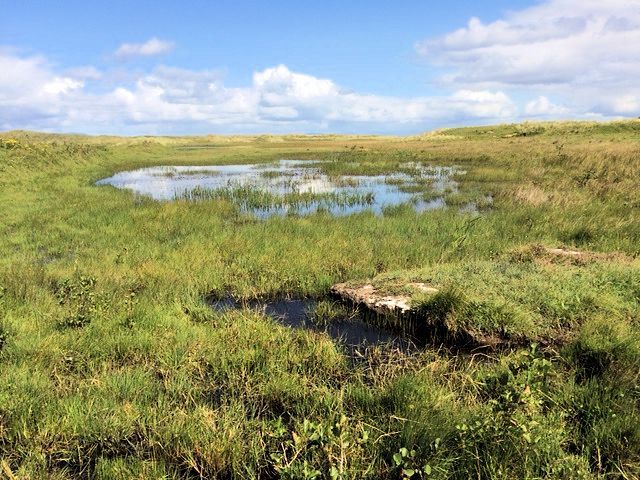The birdwatcher’s support baton was passed from Alex Copland to Alan Lauder in Sligo. Alan had kindly agreed to cycle today’s leg of the journey with me, so I was looking forward to catching up with him. We would certainly have plenty of time to natter, as today was going to be a long cycle, about 160km to Glencolmbkille in Co. Donegal.
The route north of Sligo takes us west of the imposing Benbulben mountain, part of the Darty Mountains. We didn’t have time to detour directly into them, but they are worth mentioning as part of the Wild Ireland Tour. For the slopes of the Dartry Mountains are home to a special kind of vegetation, vegetation that is dominated by mats of mosses and closely related liverworts, collectively known as bryophytes. Most of us, myself included, wouldn’t give bryophytes a second thought. But this is where I am wrong for Irish bryophytes are fascinating and have a curious story to be told.
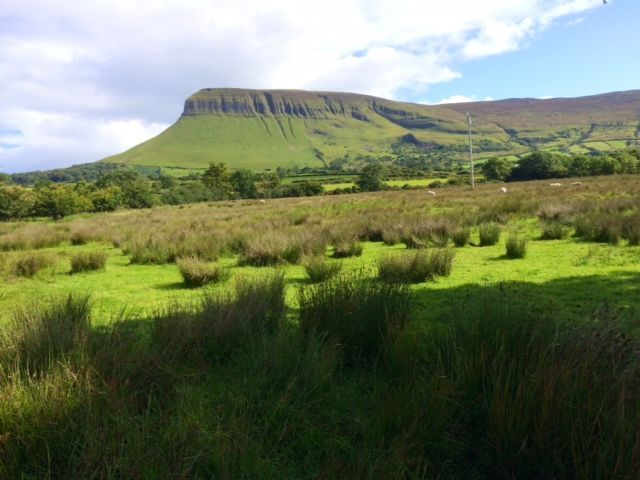
Bryophytes don’t compete well for living space with vascular plants; they grow best on bogs, sand dunes and mountain slopes, conditions harsh for plants but where bryophytes can flourish. Parts of the west coast of counties Kerry, Galway, Mayo and Donegal which have over 200 wet days each year, support some of the greatest bryophyte diversity in Europe. In all, about 800 different species and varieties grow in Ireland, and the extraordinary landscape of peaks, cliffs and gullies characteristic of the Carboniferous Limestone of the Dartry Mountains harbours perhaps the most unusual and unique bryophyte flora of them all. Here on the upper slopes bryophytes grow, sometime in great abundance, which are very rare or not found anywhere else in Ireland. Species with wonderful common names such as Irish Rock-bristle, Alpine Extinguisher-moss, Velvet Feather-moss, Atlantic Pounceworth, Lurid Cupola-moss and Blushing Bryum, to name just a few.
And some extraordinarily rare species grow here, and the chief amongst them is the Irish Beard-moss (Didymodon maximus), a species found here and nowhere else in Europe. Outside the Dartry Mountains it grows in Alsaka, Arctic Canada, on Wrangel Island in the Russian Far East, and Mongolia, displaying a world distribution of fathomless complexity. Another species, Robust Grimmia grows here and nowhere else in Ireland.
And across the countless hectares of remote upland slopes, peaks and valleys along the west coast of Ireland, the small valley of Annacoona in Gleniff is one of the richest sites for bryophyte flora in the country, supporting virtually all the local rarities. If you are interested in exploring for bryophytes, it is here that you would come, together with serious climbing gear as this is remote and treacherous terrain.
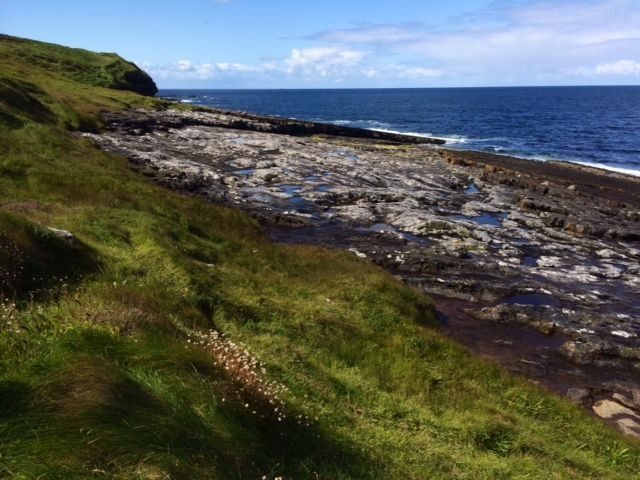
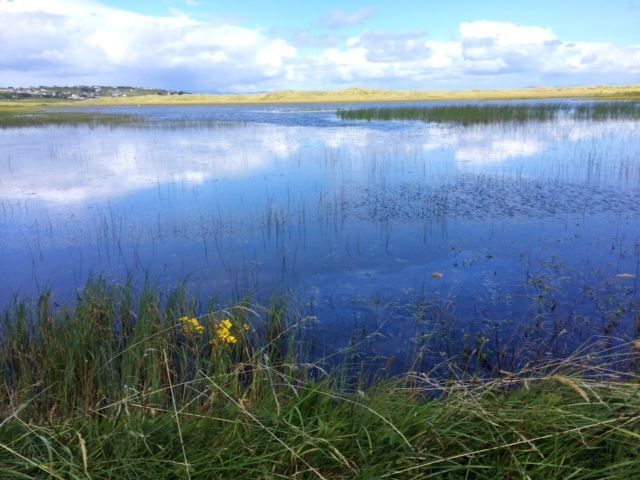
On the coast north of Benbulben, lies Mullaghmore peninsula, a place with an inglorious past, but with a wonderfully diverse range of habitats. Alan and I spent some time on the headland watching juvenile Kittiwake and Fulmar fly past. Apparently seabird populations did will in Ireland this year, unlike Scotland where populations continue to fare badly. And behind the impressive dune system at Mullaghmore lies Bunduff Lake, a coastal lake. It holds large numbers of wildfowl in winter and is designated a Special Protection Area under the Bird’s Directive. We only stopped briefly here, but the shallow lake was alive with dragonflies, and looked like a site well worth exploring.
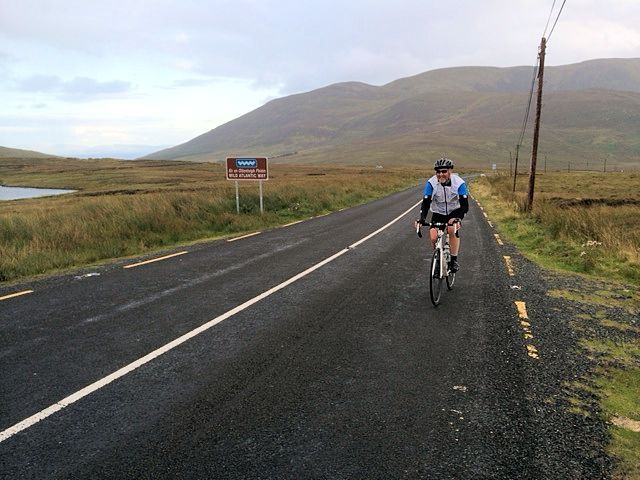
As you can image, a long cycle through wonderful landscapes give us plenty of time to catch up, and to discuss the state of nature conservation in Ireland (and many other things which if I put in print would leave me open to libel!). Alan served as Chief Executive of BirdWatch Ireland for three years, and is very familiar with the conservation NGO sector in Ireland. During this time he used his considerable experience to help BirdWatch Ireland weather the storm of the recession and to put it on a firm footing for the next few years. No easy task.
We would agree that nature conservation is not really working in Ireland at the moment, and there are many reasons for this. One thing we feel that is missing is some long term, say 50 year, perspective on nature conservation. A strategy, independently produced, that would set out medium and long term targets for nature conservation, around which the support of the different players could be galvanised. Perhaps we could then get some sense of unity of purpose from within the conservation NGO sector and prioritise the issues on which the public, private and voluntary sectors must engage on, if we are to achieve positive outcomes for conservation.
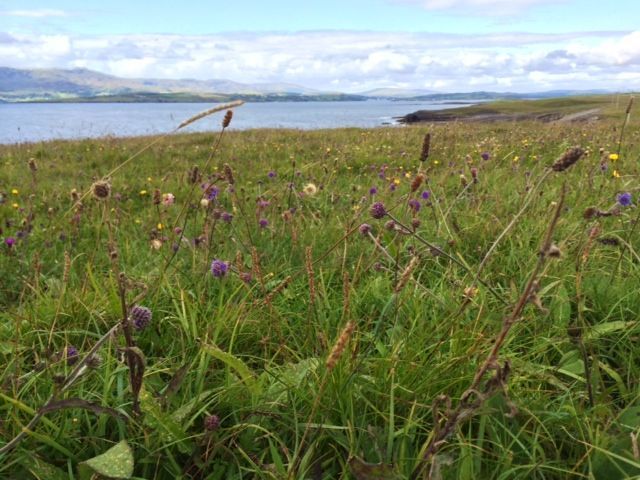
But, enough of this, and back to the Wild Ireland Tour. The first port of call in Co. Donegal was St. John’s Point, an important limestone grassland site at the end of a 10km peninsula extending into Donegal Bay. It contains some limestone pavement, but for someone who has worked in the Burren, it would be hard to get excited about it. It does, however, support an interesting calcareous grassland, including interesting species such as Bloody Cranesbill, Northern Bedstraw, Blue Moor-grass, Burnet Rose and Broad-leaved Marsh-orchid. When we visited, the Devil’s-bit Scabious was in full bloom, giving the grassland a blue hue.
Left St. John’s Point and headed for Killybegs and the hills of Donegal. Very happy to arrive in beautifully picturesque Glencolumbkille for the night. Bade farewell to Alan- I think he will sleep well!

